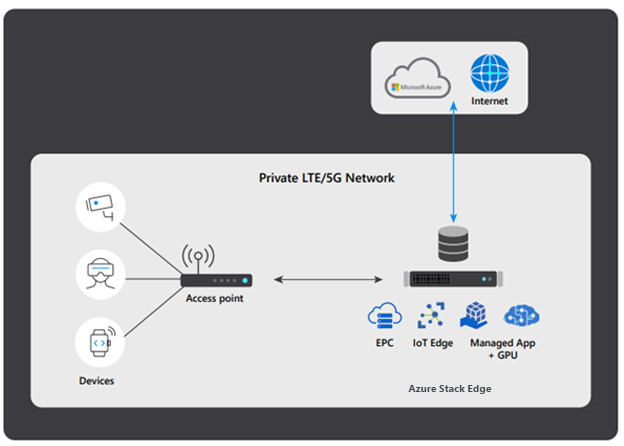The power of 5G: faster speeds, lower latencies, improved cost efficiencies, rich capabilities
The evolution of 5G has empowered enterprise organizations to do more. With the support of high-speed, high-bandwidth connections, and low-latency computing, these enterprises have been enabled to fuel entirely new forms of content and experiences. The convergence of 5G, multi-access edge computing (MEC), and the cloud make it possible for operators, managed service providers, and enterprises to create private wireless networks that are ultra-fast, secure, and scalable and that can take advantage of powerful cloud applications for analytics.
The future is poised to include innovative, far-reaching, and highly sophisticated services—the beginnings of which we can already see developing in smart cities and in many Industry 4.0 applications. Because of a broad range of factors—rising volumes of data, increased need for security and mobility, and demand for real-time processing, to name a few—private mobile networks are increasingly being viewed as a critical enabler in enterprise digital transformation. With the unique features of 5G already providing the foundation for sophisticated new services, Microsoft believes that private mobile networks represent a new way forward for emerging enterprise applications.
Recently, we’ve outlined how Azure private MEC enables operators and systems integrators to deliver private cellular, enterprise workloads, and edge compute services with ease, offering a robust partner network while combining computing, networking, and services on hardware located at the edge. In this article, we outline how bringing the power of hyperscale cloud to operator-enabled private mobile networks can lower capital expenditures (CapEx) and operating expenses (OpEx), accelerate the pace of innovation, and open up new and exciting revenue opportunities.
Partnering for private mobile networks
As enterprises look to take advantage of edge computing, they will need the combined expertise of operators for 5G technologies, and their partners for cloud and edge computing. Enterprises will benefit by partnering with operators and Managed Services Providers (MSPs) when deploying and managing 5G networks. Operators bring extensive experience in managing sophisticated mobile networks and have the tools and applications for end-to-end management. MSPs offer application diversity through their well-established partner ecosystem, allowing enterprises the deployment flexibility of managed services or turnkey implementation.
The proliferation of industry-specific use cases means there is no “one-size-fits-all” solution. A private mobile network applied to a remote oil-drilling platform, for example, will not meet the needs of an automotive manufacturer. To meet the diverse connectivity requirements, networks must be built with flexibility and simplicity in how they are configured, deployed, and managed.
An ideal solution
The key components of an effective private mobile network combine hyperscale cloud, private multi-access edge compute (MEC), LTE/5G mobile core, and end-to-end orchestration and management abilities into one easily deployable solution. When functioning in an optimal capacity, private mobile networks provide:
◉ Managed connectivity—operators can leverage the ecosystem of partners to address any connectivity needs of the enterprises, taking advantage of a substantial opportunity to deliver greater value.
◉ Managed services—these address the RAN, core, and edge components and package them within a centralized environment in the cloud, offering a single viewpoint.
◉ Self-management options—portals and dashboards can be implemented to offer service customization and visibility with ease, delivering true value to the enterprise in the form of service-level assurance.






0 comments:
Post a Comment